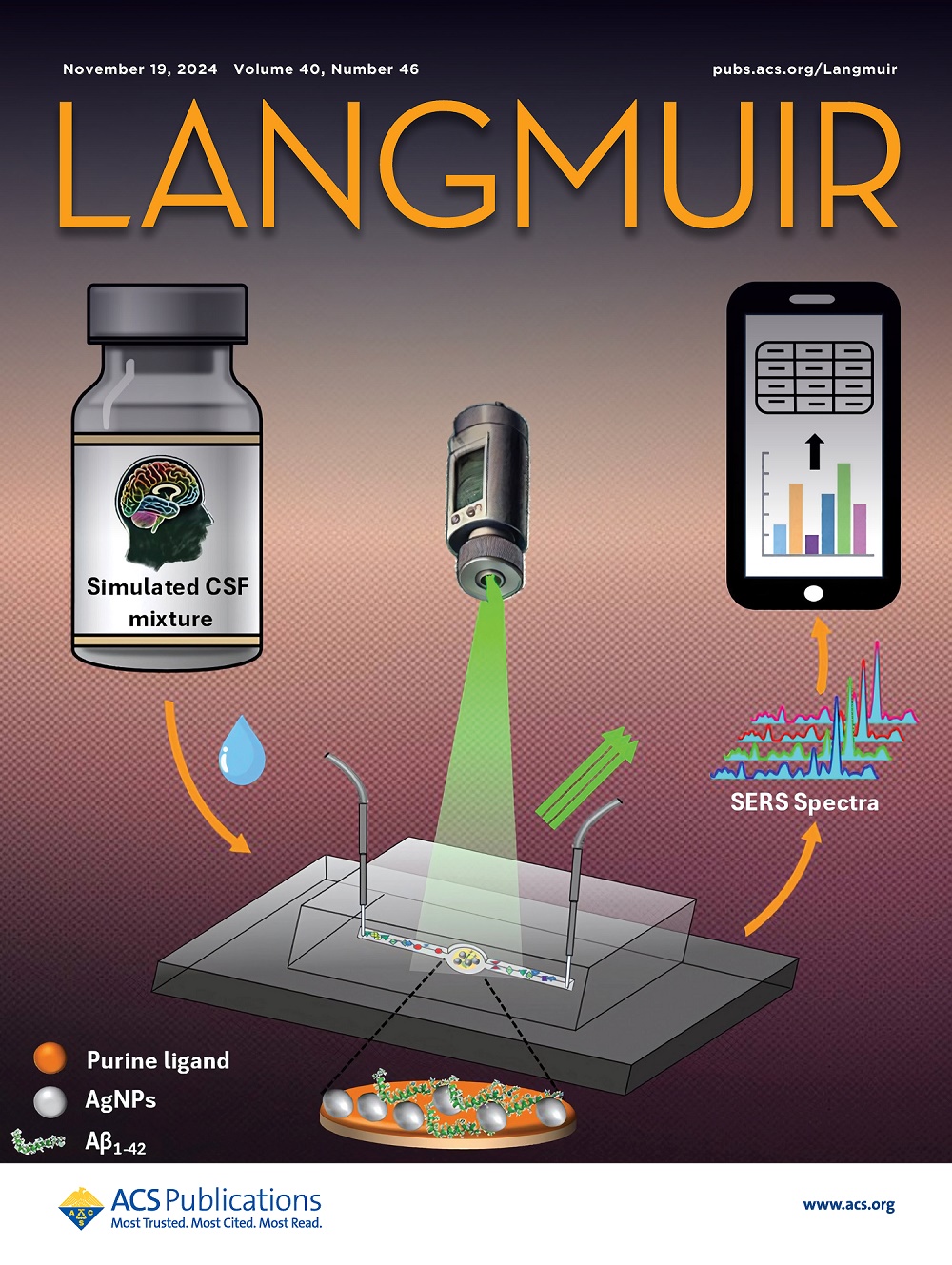Graphene Nanodots as Substrates for SEIRAS and SERS Studies on Membrane Proteins.
IF 3.7
2区 化学
Q2 CHEMISTRY, MULTIDISCIPLINARY
引用次数: 0
Abstract
Graphene nanostructures are capable of supporting plasmonic resonances in the visible and infrared parts of the spectrum. Thus, they can be exploited as platforms for Surface-Enhanced Infrared Absorption Spectroscopy (SEIRAS) and Surface-Enhanced Raman Spectroscopy (SERS) studies. One application of SEIRAS and SERS is the study of proteins at very low concentrations, down to the picomolar range. Among the different forms of graphene, graphene nanodots are ideal nanostructures that can be produced on a large scale using established protocols relying on sonication-assisted exfoliation under specific experimental conditions. Their rich surface chemistry facilitates stable and nondenaturing adsorption of membrane proteins, ensuring preservation of their native secondary structure upon immobilization. In this study, we exploited graphene nanodots deposited by drop casting or spray coating onto a silicon wafer as a substrate to study the cytochrome bd-I oxidase fromE. coli, a membrane protein that is present in the respiratory chains of bacteria. The amide I signal was examined to confirm the structural integrity of the protein once immobilized onto the graphene nanodots. SEIRAS and SERS experiments revealed reproducible enhancement of the protein signal, approximately by a factor of 2 and 6-10 compared to other substrates, respectively, enabling analyte detection with a sensitivity down to the nanomolar range. Furthermore, our tailored substrate exhibited high stability of the protein exceeding 6 days, thus underscoring its high potential for biosensing.石墨烯纳米点作为膜蛋白SEIRAS和SERS研究的底物。
石墨烯纳米结构能够在光谱的可见和红外部分支持等离子体共振。因此,它们可以作为表面增强红外吸收光谱(SEIRAS)和表面增强拉曼光谱(SERS)研究的平台。SEIRAS和SERS的一个应用是研究非常低浓度的蛋白质,低至皮摩尔范围。在不同形式的石墨烯中,石墨烯纳米点是一种理想的纳米结构,可以在特定的实验条件下利用声波辅助剥离的既定方案大规模生产。其丰富的表面化学物质有助于膜蛋白的稳定和非变性吸附,确保在固定时保留其天然二级结构。在这项研究中,我们利用滴铸或喷涂沉积在硅片上的石墨烯纳米点作为衬底来研究细胞色素bd-I氧化酶。大肠杆菌,一种存在于细菌呼吸链中的膜蛋白。检测了酰胺I信号,以确认固定在石墨烯纳米点上的蛋白质的结构完整性。SEIRAS和SERS实验显示,与其他底物相比,蛋白质信号的可重复性增强分别约为2倍和6-10倍,使分析物检测的灵敏度降至纳摩尔范围。此外,我们定制的底物显示出蛋白质超过6天的高稳定性,从而强调了其生物传感的高潜力。
本文章由计算机程序翻译,如有差异,请以英文原文为准。
求助全文
约1分钟内获得全文
求助全文
来源期刊

Langmuir
化学-材料科学:综合
CiteScore
6.50
自引率
10.30%
发文量
1464
审稿时长
2.1 months
期刊介绍:
Langmuir is an interdisciplinary journal publishing articles in the following subject categories:
Colloids: surfactants and self-assembly, dispersions, emulsions, foams
Interfaces: adsorption, reactions, films, forces
Biological Interfaces: biocolloids, biomolecular and biomimetic materials
Materials: nano- and mesostructured materials, polymers, gels, liquid crystals
Electrochemistry: interfacial charge transfer, charge transport, electrocatalysis, electrokinetic phenomena, bioelectrochemistry
Devices and Applications: sensors, fluidics, patterning, catalysis, photonic crystals
However, when high-impact, original work is submitted that does not fit within the above categories, decisions to accept or decline such papers will be based on one criteria: What Would Irving Do?
Langmuir ranks #2 in citations out of 136 journals in the category of Physical Chemistry with 113,157 total citations. The journal received an Impact Factor of 4.384*.
This journal is also indexed in the categories of Materials Science (ranked #1) and Multidisciplinary Chemistry (ranked #5).
 求助内容:
求助内容: 应助结果提醒方式:
应助结果提醒方式:


